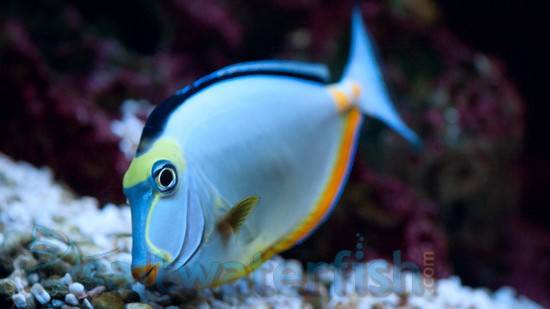Saltwater Aquarium Guide: Naso Tang (Naso lituratus)
Quick Stats:
- Care Level: Moderate
- Temperament: Peaceful
- Diet: Herbivore
- Reef Safe: Yes
- Minimum Tank Size: 125 gallons
- Maximum Size: Up to 16 inches
- Water Parameters: Temperature: 72-78°F, pH: 8.1-8.4, Salinity: 1.020-1.025
Comprehensive Guide: Naso Tang (Naso lituratus)
The Naso Tang, scientifically known as Naso lituratus, is a widespread species in saltwater aquariums. Here is a detailed guide to help you understand and care for this beautiful fish:
Habitat:
The Naso Tang is commonly found in the Indo-Pacific region, particularly around coral reefs. They prefer areas with strong water currents and plenty of hiding spots.
Reef Safe:
The Naso Tang is reef-safe, as it does not harm corals or other invertebrates. However, caution should be exercised when keeping them with delicate corals, as they may nip at their polyps.
Size:
The Naso Tang can grow up to 16 inches long, making it a relatively large fish for a home aquarium. It is important to provide them with a spacious tank to accommodate their size.
Temperament:
The Naso Tang is known for its peaceful nature. It usually gets along well with other fish species, but aggression can occur if they are kept in a small tank or with territorial tankmates.
Sexual Dimorphism:
There are no distinct visual differences between male and female Naso Tangs. Males may have slightly longer tails, but this is not a reliable method of sexing them.
Lifespan:
The average lifespan of a Naso Tang is around 10-15 years with proper care. Providing a suitable environment and a balanced diet can contribute to their longevity.
Diet in Aquariums:
The Naso Tang is primarily herbivorous and requires a diet rich in marine algae and seaweed. Supplement their diet with high-quality marine pellets or flakes designed for herbivorous fish.
Aquascaping Recommendations:
When setting up the tank for a Naso Tang, include plenty of live rock formations and open swimming spaces. This will provide them with hiding spots and areas to explore.
Captive Bred Availability:
The Naso Tang is rarely available as captive-bred. Most specimens in the aquarium trade are wild-caught. It is important to source them from reputable suppliers to ensure their health and well-being.
Compatibility with Other Fish, Invertebrates, or Corals:
The Naso Tang is generally compatible with various fish species, invertebrates, and corals. However, caution should be exercised when keeping them with aggressive or territorial tankmates. Here are five specific tankmates that are a good choice for the Naso Tang:
- Purple Firefish (Nemateleotris decora) – Peaceful and adds vibrant colors to the tank.
- Purple Tang (Zebrasoma xanthurum) – Similar in size and temperament, making them suitable tankmates.
- Banggai Cardinalfish (Pterapogon kauderni) – Peaceful and adds interesting behavior to the tank.
- Cleaner Shrimp (Lysmata amboinensis) – Provides cleaning services and forms a symbiotic relationship with the fish.
- Bubble Coral (Plerogyra sinuosa) – Adds visual interest to the tank and provides a suitable hiding spot for the Naso Tang.
Other Common Names:
The Naso Tang is also known by other common names, including Lipstick Tang and Orangespine Unicornfish.
Why Buy from Reefs4Less.com:
Reefs4Less.com is a trusted supplier of saltwater aquarium fish and supplies. They offer a wide range of high-quality products, including the Naso Tang. With their expertise and commitment to customer satisfaction, you can be confident in the health and well-being of the fish you purchase from them.
Popular Questions and Answers about the Naso Tang (Naso lituratus) in Saltwater Aquariums:
1. What is the minimum tank size for a Naso Tang?
The Naso Tang requires a minimum tank size of 125 gallons to provide ample swimming space and accommodate its potential growth.
2. Can the Naso Tang be kept in a reef aquarium?
Yes, the Naso Tang is generally considered reef-safe. However, caution should be exercised when keeping them with delicate corals, as they may nip at their polyps.
3. What should I feed my Naso Tang?
The Naso Tang is primarily herbivorous and should be fed a diet rich in marine algae and seaweed. Supplement their diet with high-quality marine pellets or flakes designed for herbivorous fish.
4. How long do Naso Tangs typically live?
With proper care, Naso Tangs can live for 10-15 years.
5. Are Naso Tangs prone to any specific diseases?
Naso Tangs are generally hardy fish but can be susceptible to common saltwater fish diseases such as marine ich. Proper quarantine procedures and a healthy environment can help prevent diseases.
| Size | 3 – 4 inches |
|---|


Reviews
There are no reviews yet.